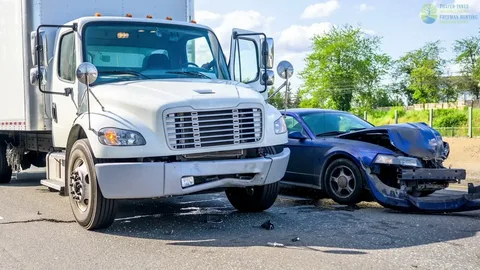If you run a business in the UK, chances are you’ve got a car park somewhere on your premises, for staff, visitors, or customers. What often goes unnoticed is how much of a legal headache that simple patch of tarmac can become.
More vehicles, tighter spaces, and busier sites have made car parks one of the most common places for accidents to happen. They might seem minor at first glance, but even a low-speed bump or slip can turn into a costly legal claim. And the number of those claims is on the rise.
The Space Problem
One obvious issue is the sheer number of cars now crammed into limited space. Many business parks and retail sites were built decades ago, long before today’s oversized vehicles became the norm.
People are often forced to squeeze into tight spots, reverse blindly, or walk between parked cars while juggling shopping bags or mobile phones. It only takes one moment of inattention for a scrape or collision to occur. Even at walking speed, a knock can lead to a personal injury or property damage claim.
When it happens on private land, the finger of responsibility often points squarely at the business owner.
Understanding the Legal Duty of Care
Under UK law, employers and occupiers owe what’s called a duty of care to anyone who visits their property. That duty doesn’t stop at the office door; it extends right across the car park.
In practical terms, this means taking reasonable steps to keep the area safe. That could include repairing potholes, keeping lighting in working order, repainting faded lines, or making sure pedestrians have clear walkways.
If something goes wrong because the car park wasn’t properly maintained or managed, the business can be held liable. According to Legal Expert, car park accident claims often fall under the Occupiers’ Liability Act 1957 or the Health and Safety at Work etc. Act 1974, both of which expect employers to protect people on their premises.
Hazards That Often Lead to Claims
Car park hazards are usually easy to spot but even easier to overlook in the daily rush of running a business. The main culprits tend to be:
- Poor lighting, especially in winter, leading to trips, slips or collisions
- Uneven or broken surfaces, which damage vehicles or cause injuries ranging from broken bones to back injuries
- Faded road markings that confuse drivers about right-of-way
- Icy patches or oil spills left untreated
- Tight or poorly marked bays, encouraging risky manoeuvres
It doesn’t take much for these small maintenance issues to escalate into a full-blown compensation claim.
Pedestrians: The Overlooked Risk
Not all car park accidents involve vehicles colliding. A large number of incidents involve pedestrians — employees or customers — who slip, trip or get struck by a car moving too fast.
If there’s no proper separation between traffic and footpaths, or the lighting is poor, the business may still be considered at fault. A lack of warning signs, barriers or clear sightlines can all contribute to liability.
The Hidden Cost of Car Park Claims
The financial hit from an accident can go well beyond the cost of repairs. A single claim can push up insurance premiums, tie up management time, and dent a company’s reputation.
For bigger employers, multiple incidents might trigger an inspection by the Health and Safety Executive (HSE). In serious cases, if an accident was caused by known hazards that weren’t dealt with, prosecution is possible.
In short, prevention costs less than compensation.
How to Reduce the Risks
Keeping on top of car park safety doesn’t need to be complicated, but it does require consistency. Good practice includes:
- Regular inspections to spot hazards early.
- Prompt repairs to surfaces, barriers and lights.
- Clear signage for both drivers and pedestrians.
- Winter planning, such as gritting icy areas and displaying warnings.
- Training staff on how to report problems or incidents.
- Documenting maintenance, which can be crucial evidence if a claim arises.
Showing that you’ve taken reasonable precautions can often make the difference between a claim being upheld or dismissed.
Insurance and Policy Reviews
Every business with a car park should check its insurance policies to ensure they include both public liability and employers’ liability cover. These policies provide protection if an accident happens on your premises.
It’s also wise to carry out formal risk assessments at regular intervals. Not only does this help prevent incidents, but it also demonstrates compliance if an investigation takes place.
Why Claims Are Rising
There’s no single cause behind the recent spike in car park-related claims. Heavier traffic, urban congestion, and a greater public awareness of compensation rights have all played a part. Businesses are also more likely to have CCTV or digital reporting systems now, which means incidents are better documented — and harder to ignore.
Put simply, car parks have evolved from being just a convenience to becoming a focal point of workplace safety and legal compliance.
The Takeaway
Car park accidents might not sound like a major business risk, yet the financial and reputational consequences can be severe. The law expects employers and property owners to take sensible precautions to protect everyone on site.
Neglect those duties, and a cracked paving stone or dim light could end up costing thousands.
For guidance on preventing incidents or dealing with liability claims, you can read Legal Expert’s detailed overview of car park accident claims.










